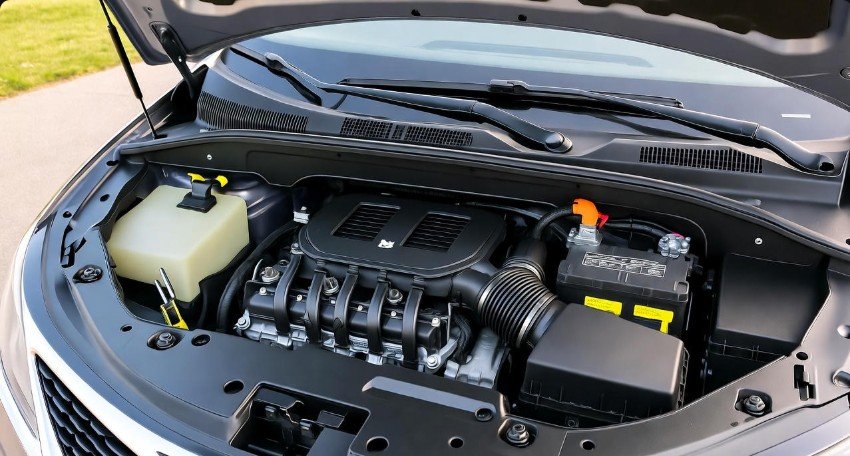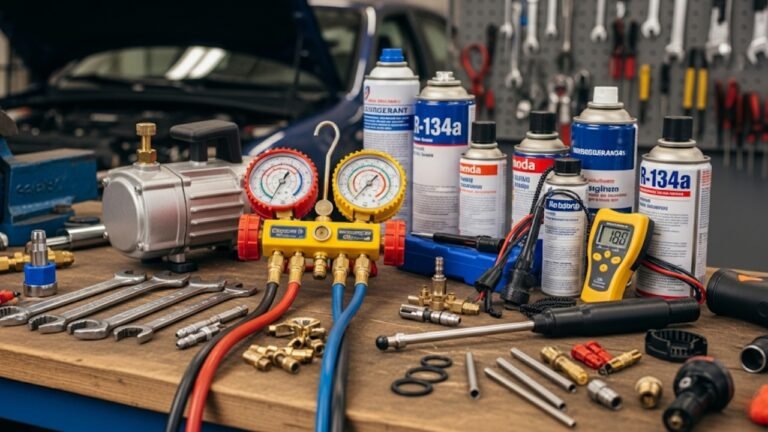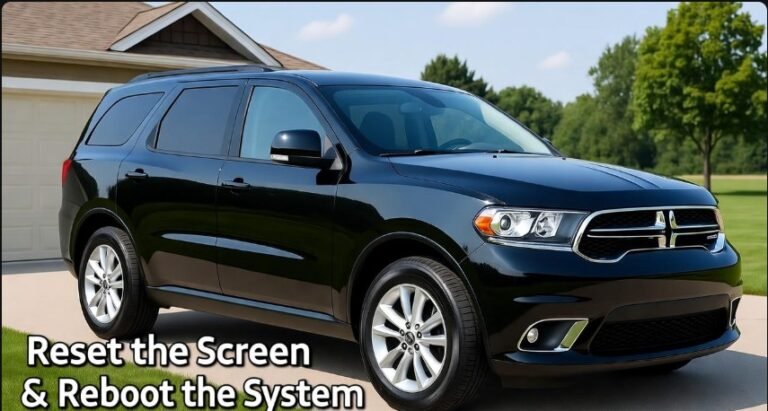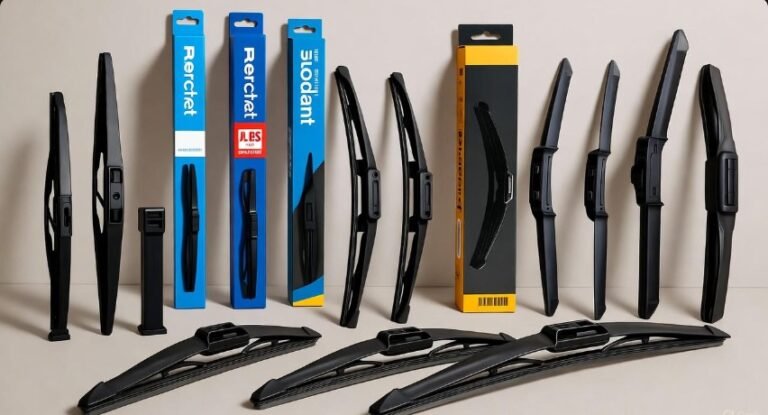How to Fix Service Shifter in Chrysler Pacifica: Step-by-Step Guide

If you have ever seen a Service Shifter message pop up in your Chrysler Pacifica, you know the feeling. It hits you like a sudden pause in the middle of a smooth song. One moment you are driving without worry, and the next moment the van sends you a warning. This message can make anyone feel stressed because the shifter is the heart of how your vehicle moves. But here’s the good part. Most of the time, this issue is not as scary as it looks. With the right steps, clear guidance, and a bit of calm, you can handle it like a pro. Think of this guide as a friend who sits beside you and says, “Relax, let’s fix this together.”
In this article, we’ll go deep into why the service shifter problem happens, what you can do about it, and how to fix it step by step. I’ll use simple words and a warm tone so the journey feels smooth and not overwhelming. You’ll also learn how to understand the system better, when to repair things yourself, and when to ask for help. By the end, you’ll feel more confident about handling this issue, even if you are not a car expert. That’s the promise.
Understanding the Heart of the Problem
Before you start fixing anything, you need to understand why the Chrysler Pacifica service shifter message appears. Think of it like seeing a light on in your home. You don’t start pulling wires. You first ask, “Why did this turn on?” The shifter system in the Pacifica has many parts. They must work together without delay. If one part fails, the whole system starts to slip. That’s when you see the warning.
The main issue is usually the communication between the shifter and the vehicle’s computer. Sometimes there is a loose wire. Sometimes the brake sensor does not send the right signal. Sometimes the solenoid is tired from years of use. Other times a simple fuse can be the troublemaker. You may be surprised how often a small thing can cause a big message.
This is why you should not panic when you see the service shifter alert. In many cases, the fix is simple and fast. Your Pacifica is just trying to tell you that one part needs attention. Listen to it, and you’ll solve the issue much easier.
Why the Service Shifter Warning Appears
When the message pops up, it means something in the system is not acting the way it should. The car sends this alert to stop you from shifting into wrong gears. It’s a safety move. Let’s look at the common reasons that trigger it.
Most common causes include:
-
Worn-out shift interlock solenoid
-
Faulty brake pedal position sensor
-
Electrical faults like blown fuses
-
Loose or damaged wiring
-
Mechanical blockage inside the shifter mechanism
-
Broken or stretched shift cable
Each of these issues hits the system in a different way. For example, if the brake pedal sensor fails, the car thinks you didn’t press the brake. So it locks the shifter. If the solenoid wears out, the shifter cannot unlock even if everything else is fine. If a fuse blows, the whole communication link breaks like a cut telephone line.
These reasons may sound technical, but don’t worry. When we break them into small steps, the repair becomes simple and easy to follow.
Signs That Your Chrysler Pacifica Has a Service Shifter Issue
Some drivers see the Service Shifter message only once. Others see a mix of strange behavior before the warning appears. Learning the signs helps you catch the problem early.
You may notice:
-
The shifter feels stiff or stuck
-
The vehicle refuses to shift out of Park
-
The shifter lights blink or don’t turn on
-
Brake lights stop working
-
You hear unusual clicking near the shifter
-
The ignition refuses to release the key
-
Dashboard error messages keep appearing
These signs are like whispers before the storm. They tell you something is wrong. When you understand these hints, you prevent the issue from becoming bigger.
Common Causes of Service Shifter Problems
To fix the problem, you need to understand each cause in simple terms. Here’s a detailed look at the parts that can fail and how they affect the system.
1. Worn-Out Shift Interlock Solenoid
The solenoid works like a gatekeeper. It allows the shifter to move only when you press the brake pedal. It’s a safety part that stops kids or careless hands from shifting by mistake. But with time, this part gets tired. Dust, heat, and long use make it weak. When it fails, the shifter gets locked even if you press the brake. That’s when the service shifter message appears.
2. Faulty Brake Pedal Position Sensor
This sensor tells the car when the brake pedal is pressed. If this sensor sends the wrong signal, the system shuts down. It’s like talking to someone on the phone but the voice is too low. The message gets lost. The car thinks you didn’t press the brake, so it keeps the shifter locked. This is a common issue in the Chrysler Pacifica.
3. Electrical Problems
A car’s electrical system is like the nervous system in your body. If a fuse blows or a wire breaks, the signal cannot travel. When wiring gets old, or a fuse fails, the shifter loses power. You may see blinking lights or no lights at all. You may hear clicking sounds. You may get multiple warning messages. All of this comes from electrical disruption.
4. Mechanical Damage or Obstruction
Sometimes the issue is not electronic. It’s mechanical. Debris, dust, or even spilled drinks can block the shifter mechanism. Kids dropping small toys inside the console can also cause trouble. A broken or stretched shift cable can also stop the system from moving. Mechanical issues are often simple but annoying.
Step-by-Step Guide to Fix Service Shifter in Chrysler Pacifica
Let’s walk through the repair steps. Each step is easy to follow and uses simple language so you never feel lost. Many drivers fix this issue at home without stress. You can do the same.
Step 1: Check the Brake Lights
This is the simplest and most important step. The shifter will not unlock unless the brake lights work. It’s how the car knows you pressed the brake pedal. If the lights don’t turn on when you press the pedal, the brake pedal sensor may be faulty.
Press the brake pedal and look at the lights. If they are off, that’s your first clue. Replace the brake pedal position sensor. It’s a small part, usually easy to access. When this sensor works again, the service shifter warning often disappears.
Why this step matters:
The shifter and the brake pedal work like two dancers. If one loses rhythm, the other cannot move.
Step 2: Inspect the Shift Interlock Solenoid
This is the next important part. The solenoid is usually under the console or near the brake pedal. You may need to remove a few screws, but the process is not very hard.
Check the solenoid for:
-
Dust
-
Burn marks
-
Loose plugs
-
Weak clicking sound
-
No movement at all
If the solenoid is damaged, replace it. A new solenoid can bring the shifter back to life like fresh batteries in a remote.
Small tip:
If the solenoid is only dusty, clean it gently before buying a new one.
Step 3: Look for Electrical Problems
Electrical issues are common in the Pacifica. Start with the fuses. Look for the fuse box under the dashboard or in the engine compartment. Find the fuses that control the shifter or brake system. Replace any blown fuses.
Also check:
-
Loose connectors
-
Bent pins
-
Worn-out wires
-
Broken insulation
-
Corroded terminals
Electrical issues are like weak phone signals. Once the connection is fixed, the system starts working again without further trouble.
Step 4: Check the Shifter Mechanism
Sometimes the problem is as simple as dirt or an object stuck inside the shifter console. Open the console and look for anything unusual. Vacuum out small debris. Clean the area with gentle cleaners. Check the shift cable. If the cable is broken or stretched, replace it.
A damaged shift cable can trick you into thinking the issue is electrical. But often the mechanical blockage is the main reason for shifter failure.
A Quick Table for Understanding the Issue
| Problem Type | Common Sign | What You Should Do |
|---|---|---|
| Faulty Brake Sensor | Brake lights do not work | Replace the sensor |
| Failed Solenoid | Shifter stuck in Park | Inspect and replace |
| Electrical Fault | Warning lights flashing | Check fuses and wiring |
| Mechanical Block | Shifter feels stuck | Clean or replace parts |
Step 5: Test the Shifter
Once you’ve checked the brake lights, inspected the shift interlock solenoid, reviewed the electrical system, and cleared any mechanical obstructions, it’s time for the final test. Start your Chrysler Pacifica and press the brake pedal. Slowly try moving the shifter out of Park and into other gears. If everything feels smooth, your efforts have paid off. The Service Shifter warning should disappear from the dashboard, and the vehicle should shift as expected.
Testing is crucial because it confirms that all systems—electrical, mechanical, and safety—are working together. Even if one small step is skipped, the shifter may not operate correctly. Think of this as checking a bridge after repairs: you don’t just finish construction; you walk across it to ensure it’s safe.
When to Seek Professional Help
While many Chrysler Pacifica owners can follow the steps above and fix the shifter themselves, some situations require a trained eye. Here’s when professional assistance is the safer route:
-
Uncertainty about the repair process: If you’re unsure how to inspect the solenoid, sensor, or wiring, a professional can prevent costly mistakes.
-
Persistent issues: If the shifter still doesn’t work after following all troubleshooting steps, the problem may be deeper within the transmission system or vehicle computer.
-
Electrical discomfort: Working with wiring can be tricky. A certified mechanic has the right tools and knowledge to handle it safely.
-
Safety concerns: The shifter is part of your vehicle’s transmission system. Any mistakes can cause dangerous driving situations.
Professional help is not a failure—it’s a smart choice when your safety is at stake. Certified Chrysler dealerships or trusted mechanics have the experience and parts needed to solve stubborn issues efficiently.
Tips for Preventing Future Service Shifter Problems
Once your Chrysler Pacifica is back to normal, you can take steps to reduce the likelihood of future shifter problems:
-
Regular brake light checks: Ensuring your brake lights work keeps the sensor and shifter in sync.
-
Keep the shifter area clean: Avoid spills, dust buildup, or small objects around the console.
-
Inspect fuses and wiring periodically: Prevents minor electrical issues from becoming major problems.
-
Listen for unusual clicks or stiffness: Early signs of solenoid or cable wear can be fixed before they cause a warning.
-
Avoid forcing the shifter: Gentle handling prolongs the life of the interlock solenoid and cables.
Prevention is always easier and cheaper than repair. A little care and observation can save you both time and money.
Frequently Asked Questions
1. How Do You Fix a Service Shifter in Chrysler Pacifica?
To fix it, start by inspecting the brake lights and sensor. Check the shift interlock solenoid, then inspect wiring and fuses. Finally, look for mechanical obstructions or a worn shift cable. Replace or repair faulty parts, and then test the shifter.
2. Why Is There a Problem With the Shifter in My Chrysler Pacifica?
The issue could stem from a worn solenoid, faulty brake sensor, electrical problem, or mechanical obstruction. Each of these interrupts the normal operation of the shifter. Understanding the root cause is key to a lasting repair.
3. Can I Fix the Shifter Problem Myself?
Yes, if you have basic tools, mechanical intuition, and patience, many Pacifica owners fix the issue at home. However, if you are uncomfortable with electrical or mechanical work, professional help is recommended.
4. How Much Does It Cost to Fix a Service Shifter?
Repair costs vary. Replacing a solenoid or sensor may cost a few hundred dollars, while more complex electrical or mechanical repairs could reach $1,000 or more. Labor costs at dealerships tend to be higher, so shop around for estimates.
5. How Long Does It Take to Fix the Service Shifter?
Simple repairs, like replacing a sensor or fuse, can take under an hour. Mechanical or electrical troubleshooting may take several hours, depending on accessibility and complexity.
6. Will Cleaning the Shifter Mechanism Help?
Absolutely. Dust, debris, or small objects can block movement. Cleaning the console area and checking the shift cable can restore smooth operation without needing part replacement.
7. Can a Blown Fuse Cause the Service Shifter Message?
Yes. Fuses control power to the shifter and interlock system. A blown fuse disrupts communication, causing the warning message. Always check fuses as a first step before more complex repairs.
8. Is This Problem Common in Chrysler Pacifica?
Yes, many drivers report the Service Shifter warning. It often appears after several years of use or in vehicles with heavy mileage. The good news: most problems are repairable without replacing the entire shifter assembly.
Conclusion
The Service Shifter warning in a Chrysler Pacifica can feel alarming, but it’s often a manageable issue. Most problems are caused by worn solenoids, faulty brake sensors, minor electrical faults, or mechanical obstructions. By following the step-by-step guide, checking each system carefully, and testing the shifter afterward, you can restore normal function safely and efficiently.
Remember, safety is the top priority. If any step feels beyond your comfort level, don’t hesitate to seek professional help. Regular checks and gentle care will help prevent future issues, keeping your Pacifica shifting smoothly for years to come.
By taking control of the problem with patience and precision, you turn a stressful alert into a simple fix. Soon, that dashboard warning will be a distant memory, and your Pacifica will glide down the road like it should—smoothly, safely, and reliably.






